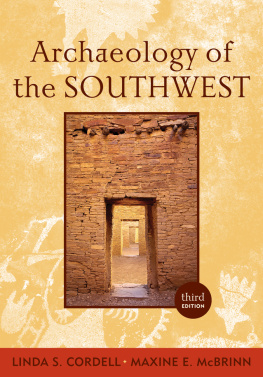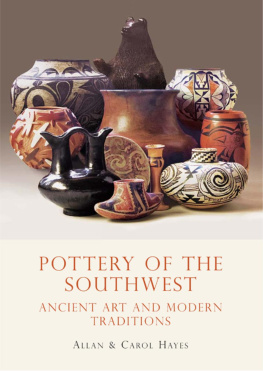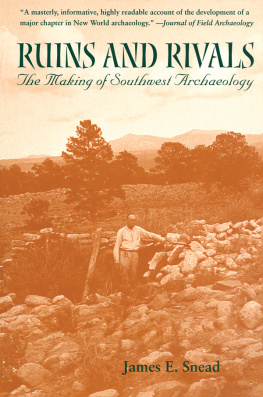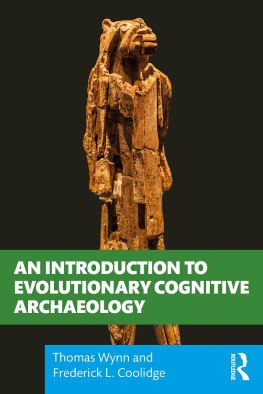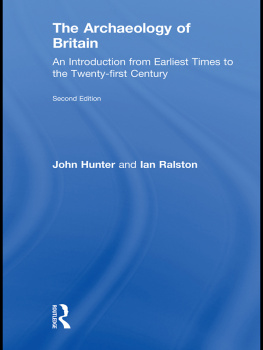ARCHAEOLOGY OF THE SOUTHWEST
THIRD EDITION
Archaeology of the Southwest
Third Edition
Linda S. Cordell and
Maxine E. McBrinn
First published 2012 by Left Coast Press, Inc.
Published 2016 by Routledge
2 Park Square, Milton Park, Abingdon, Oxon OX14 4RN
711 Third Avenue, New York, NY 10017, USA
Routledge is an imprint of the Taylor & Francis Group, an informa business
Copyright 2012 Taylor & Francis
All rights reserved. No part of this book may be reprinted or reproduced or utilised in any form or by any electronic, mechanical, or other means, now known or hereafter invented, including photocopying and recording, or in any information storage or retrieval system, without permission in writing from the publishers.
Notice:
Product or corporate names may be trademarks or registered trademarks, and are used only for identification and explanation without intent to infringe.
Library of Congress Cataloging-in-Publication Data
Cordell, Linda S.
Archaeology of the Southwest / Linda S. Cordell and Maxine E. McBrinn. 3rd ed.
p. cm.
Includes bibliographical references and index.
ISBN 978-1-59874-675-4 (pbk.: alk. paper)
1. Indians of North AmericaSouthwest, NewAntiquities. 2. Excavations
(Archaeology)Southwest, New. 3. Southwest, NewHistory. 4. Southwest, New
Antiquities. I. McBrinn, Maxine. II. Title.
E78.S7C66 2012
979.01dc23
2011050859
ISBN 978-1-59874-675-4 paperback
Contents
The purpose of this book, like that of its two predecessors, is to provide an up-to-date synthesis of southwestern archaeology for college students, general readers, archaeologists who work in the Southwest, and those who work in other parts of the world. We have tried to incorporate the many advances made in the subject since publication of the second edition in 1997. At the same time, we wanted to make this book more accessible. In order to accomplish these two somewhat antithetical goals of being comprehensive and still reader-friendly, we have made notable changes in the book.
This book is shorter than its predecessor, the second edition, but still addresses the broad scope of archaeological research in the Southwest. We concentrate on exploring how archaeologists learn about the past, how they "know what they know," rather than on presenting a catalogue of discoveries or an index of important archaeological sites. This is not an encyclopedia. Rather, it is a discussion of ideas about the past and the kinds of evidence that support them. As in the previous editions, we provide background information in the first three chapters and follow with chapters arranged in the chronological order of the archaeological record from earliest remains to the most recent. This edition differs from previous ones in devoting a full chapter to the archaeology of the period after Europeans first entered the region ().
Please note that we address most technical issues as they relate to topics covered in chronological order. For example, a discussion of radiocarbon dating appears in in the context of Paleoindian archaeology. We encourage readers to use the index and table of contents to help locate technical topics of interest.
Since the 1997 edition, the number of publications in our field has probably at least doubled, and in that book, the bibliography was more than 100 pages long. To keep to our intention of shorter is better, we decided not to cite all or even most of the primary literature here. Rather, our references are mostly to works that will lead readers to the primary sources. Students beware! When you are writing research papers, do not cite this book as a primary sourceunless you are citing our opinion or quoting usand do not crib our references as primary sources. Rather, use our references to find the originals!
We have also deliberately not cited, and not included in our bibliography, publications In the so-called "gray literature" composed of many hundreds of ), we note that there are new databases coming on-line as well as new on-line site files that will facilitate access to much primary data. We hope you will use them.
Unfortunately, we could not include color images in this edition. This was our publisher's mandate. We hope that in the future, an on-line textbook, or a textbook that has an on-line component, will provide the rich color imagery our field deserves.
Writing a book is hard work. We write books so that archaeology in general and Southwest archaeology in particular become better disciplines. We want our words to encourage you to add your talents to the field, to contribute to the growing body of research, and to join in the excitement of intellectual discovery and debate.
We, as the authors of this book, accept responsibility for its shortcomings. We have tried to be sure that it contains few errors. We acknowledge that there are probably a few unintentional mistakes, for which we apologize.
Acknowledgments
We wish to acknowledge the exceptional work of our editorial team, Jane Kepp, June-el Piper, Kari Schleher, Laura Ware, Ellen Goldberg, and Crennan Ray. We are indebted to David Underwood, Ronald Stauber, Alex Kurota, and Marjorie Leggitt for their skills in drafting our maps, line drawings, and illustrations. Our photo permissions are, of course, acknowledged in figure captions. However, finding the appropriate images involved an entire community of knowledgeable colleagues who came to our assistance. We are forever grateful to Adriel Heisey, Adriel Heisey Photography; Diane Bird of the Museum of New Mexico, Laboratory of Anthropology, Photo Archive; Jonathan Damp, Bayfield, Colorado; David Kilby, Eastern New Mexico University; Jim Enote, A:shiwi A:wan Museum and Heritage Center; Kurt Dongoske, Zuni Cultural Resources Enterprise; Arden Kucate, Pueblo of Zuni; Eric Kaldahl, Amerind Foundation, Dragoon, Arizona; Kelley Hays-Gilpin, Northern Arizona University; Patricia L. Crown, University of New Mexico; Ann 1 Ramenofsky, University of New Mexico; Catherine Baudoin, Photo Archives, Maxwell Museum of Anthropology, University of New Mexico; Hayward Franklin, Albuquerque, New Mexico; Randall McGuire, State University of New York, Binghamton; Bonnie Souza and Malinda Blustain, R. S. Peabody Museum, Phillips Academy, Andover; Ronald H. Towner, Laboratory of Tree-Ring Research, University of Arizona; Carla Van West, Statistical Research Foundation and Edgar K. Huber, Statistical Research, Inc.; Rory Gauthier and Derek Toms, National Park Service; Daniel Kosharek, Palace of the Governors, Photo Archives; Matthew Schmader, City of Albuquerque; David Meltzer, Southern Methodist University; David H. Thomas, American Museum of Natural History; Stephen Nash, Denver Museum of Nature and Science; James A. Neely, University of Texas; Cherie Scheick, Southwest Archaeological Research Consultants; H. Wolcott Toll, Office of Archaeological Studies, Museum of New Mexico; William H. Doelle, Archaeology Southwest (formerly Desert Archaeology); Sheila Goff, History Colorado; Kurt Anschuetz, Rio Grande Foundation for Communities and Cultural Landscapes; and Jeff Brown, Aspen CRM Solutions.

